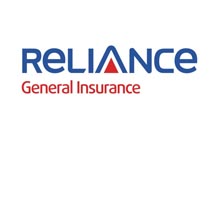HEALTH INSURANCE IS THE FASTEST GROWING SEGMENT IN INDIA
 Health insurance is one of the fastest growing segment in India but the insurance amount is not sufficient as there is lack of awareness about the amount of sum insured, over dependence on corporate health insurance coverage, willingness to pay a premium that is only up to the highest limit of rebate under Section 80D of the Income Tax Act etc. India’s healthcare sector has been growing rapidly driven by a number of factors such as increasing the average life expectancy and average income level and rising awareness for health insurance. The Indian healthcare industry, which comprises hospitals, medicines, infrastructure, and medical devices, outsourcing telemedicine, health insurance and medical equipment is expected to reach US $100 billion by 2015 from the current US $65 billion, growing at around 20 percent year of year as per rating agency Fitch.
Health cover has been one of the fastest growing segments within the insurance industry. However, despite its growth, the penetration of health insurance remains low in the country, rendering a large section of the population open to huge out-of-pocket medical expenses. With rising medical cost, there is need for a wider penetration of health insurance. In a country with a population of 1.25 billion people, private health insurance penetration is still only approximately 5 per cent. This provides a huge opportunity for health insurance companies. Moreover, in India the share of out-of-pocket expenditure in overall healthcare expenditure is significantly higher than comparable developing countries as well as the developed countries. Our government healthcare spending is more focused on low income and below the poverty line (BPL) segments.
Health insurance is one of the fastest growing segment in India but the insurance amount is not sufficient as there is lack of awareness about the amount of sum insured, over dependence on corporate health insurance coverage, willingness to pay a premium that is only up to the highest limit of rebate under Section 80D of the Income Tax Act etc. India’s healthcare sector has been growing rapidly driven by a number of factors such as increasing the average life expectancy and average income level and rising awareness for health insurance. The Indian healthcare industry, which comprises hospitals, medicines, infrastructure, and medical devices, outsourcing telemedicine, health insurance and medical equipment is expected to reach US $100 billion by 2015 from the current US $65 billion, growing at around 20 percent year of year as per rating agency Fitch.
Health cover has been one of the fastest growing segments within the insurance industry. However, despite its growth, the penetration of health insurance remains low in the country, rendering a large section of the population open to huge out-of-pocket medical expenses. With rising medical cost, there is need for a wider penetration of health insurance. In a country with a population of 1.25 billion people, private health insurance penetration is still only approximately 5 per cent. This provides a huge opportunity for health insurance companies. Moreover, in India the share of out-of-pocket expenditure in overall healthcare expenditure is significantly higher than comparable developing countries as well as the developed countries. Our government healthcare spending is more focused on low income and below the poverty line (BPL) segments.
LIFESTYLE DISEASES:
There is also a substantial increase in lifestyle and communicable diseases such as diabetes and hypertension. However, only 15 percent of the population has some form of health insurance, making out-of-pocket healthcare payments in India amongst the highest in the world. Therefore, considering the rising healthcare cost inflation and changing disease pattern more towards lifestyle diseases in the urban areas, the need for health insurance will continue to increase. A recent study (Cigna 360 Well-being report, focusses on monitoring and tracking motivations, perceptions and attitudes towards overall ‘well-being’ amongst consumers in across 11 countries including India) revealed that, majority of Indians in the last year (65 per cent) paid for their medical expense out of their own pocket and in future, they will continue to pay for the expense themselves. Furthermore, during retirement, only about 1 in 4 (26 per cent) claimed they will be covered by private insurance.UNDER INSURANCE:
The underinsurance percentage of people between 61-65 years is 75%. One of the main reasons for this alarming underinsurance statistics is that policyholders do not upgrade their sum insured on the basis of their increasing age, changing needs and medical inflation. Almost half of health insurance policyholders in India are underinsured finds a study by Apollo Munich. What this means is that they have purchased low sum insured health insurance policies, which is not sufficient to take care of their medical emergencies. On the one hand India faces a challenge of lack of health insurance penetration; on the other hand those who have health insurance are underinsured. People must understand that health insurance is not just a tax saving tool, and therefore be mindful while choosing a sum insured for themselves and their family. The standalone health insurer studied around 7 lakh policyholders spread across 82 cities in India, and has found that both men and women across metros, tier 1 and 2 cities and towns are underinsured. At 52% men are more underinsured than women at 46%. Also, underinsurance is more prevalent in higher age brackets as 62% of policyholders above 45 years of age. The slight respite to this grave problem is that young people seem to be choosing the right sum insured comparatively, since at 38% people between 18-35 years are the least underinsured segment amongst all other age groups. The maximum number of underinsured people 59% is in South while North, West, East and Central parts of the country is 49%, 49%, 48% and 45% respectively.TOP UP HEALTH INSURANCE PLANS:
Top-up health insurance plans provide an extra health care financing shield in the most economical way, especially, when employees have an employer-provided base health insurance cover. They can easily top up their current health insurance policy, by either contacting an agent or reviewing various top-up options on the Internet. One should ideally look for a top-up policy that gives an option to convert to a full-fledged health insurance plan close to the retirement. To buy a top-up plan, one needs to fill up an online application form. Most insurance companies do not ask for a medical examination while purchasing a top-up plan of up to Rs. 5 lakh, unless there is a medical adversity listed in the application form. In cases where there is a medical check-up required, the insurance company bears the cost for the same, once the application is accepted. A loading on premium or exclusion may be levied because of adverse results of a medical check-up. Top-up plans are often underrated plans and their importance is clear when an insured leave a job and the new employer does not offer a similar policy or offers a reduced cover. The policyholder can certainly claim a tax rebate for your top-up plan as per the Income Tax Act, Section 80D.MAKING HEALTH INSURANCE UNIVERSAL:
The number of people covered under health insurance has touched 36 crore mostly under government schemes. The primary objective of the government is to make health services universal and accessible. The private health and insurance industry could partner in creating more facilities for treatment of patients, such as leveraging idle beds in private hospitals. A study by the World Bank (2001) noted that at least 24% of all people hospitalized in India in a single year slipped below the poverty line because they were hospitalized. The unfortunate truth, and biggest motivation to augment base-level health insurance, is that a large number of people in our country borrow money or sell assets to pay for their hospitalization expenses/medical treatment. There is a need to incentivise people who are not inclined to buy health insurance in form of free check-ups or discounts as part of efforts to deepen market penetration in this particular segment. The spending on healthcare is seen as a superior good and only taken by people who are risk-taking, so it is required to incentivise those who don’t buy health insurance. For the people who are risk averse, it is important to incentivize them by offering some value to them like free health check-ups or discounts, which will help in realising the goal to make health insurance universal. It is a socio-economic challenge in India that health insurance is not accessible to all and it lacks sustainability as well. Health insurance sector can only grow, if it is commercially viable for all stakeholders.DIGIITIZATION IN HEALTH INSURANCE:
The digitization and IT are changing the landscape of healthcare and health insurance ecosystem in the country. This will enable seamless interoperability of data that will facilitate patient safety and lead to better patient outcomes. With the health insurance sector poised for major growth in the coming decade, demand for more efficient systems of data storage and transfer is set to increase. Aadhaar is the biggest disruptor as well as enabler in digital society today and health insurance sector is one of the biggest beneficiaries. Integrating Aadhaar with health insurance enrolment, beneficiary identification, claim processing, hospital reimbursement, E-KYC will ensure a paperless, cashless, interoperable, secure, healthcare ecosystem in the country, and ultimately help in the growth in the health insurance sector. The Unique Identification (UID) of stakeholders within healthcare ecosystem such as providers, diagnostic centres and doctors will play a critical role in the growth of digitisation of health insurance in India. Digitisation presents many opportunities for health insurers. For instance, it helps in expanding reach, improves market share, and helps in providing additional value to customers. In India, insurers have taken steps to incorporate digitisation into their business models, but adoption has been sluggish due to many challenges in the path.GROWTH DRIVERS:
The retail sub-segment is expected to grow at a robust pace driven by increased penetration in Tier-II and Tier-III cities, substitution of out-of-pocket expenditure by health insurance spends, increasing urbanisation, demographic shifts and medical inflation. With increase in the maturity of the market, this segment is expected to see innovative products being offered by insurers like wellness management, managed healthcare etc. This coupled with the government and the insurance industries’ thrust towards awareness, increased penetration and preventive care, this segment is to grow at a robust pace. Insurers need to offer the right product, quick service at the right price and deliver what is unexpected. Due to rising medical treatment costs, it is very unlikely that the premium rates will come down. Insurance products provide coverage for medical treatment cost. Hence, in general, in most markets, the premium increase trend follows the medical cost increase trend of the market. Medical cost inflation generally is slightly higher than the consumer price index inflation in most countries. For India too, a similar trend is likely to continue which will lead to insurance premium cost increase at a similar level. The move to sell insurance through ecommerce platforms is a welcoming initiative by IRDA which will open up new avenues and growth opportunities. Health insurance is an important component of the healthcare delivery ecosystem wherein digitisation becomes mandatory for enhancing the overall patient care and experience. At present only one-fifth of the population is covered with some form of health insurance. This suggests that huge potential for growth is available for the healthcare insurance industry. Digitisation presents many opportunities for health insurers. For instance, it helps in expanding reach, improves market share, and helps in providing additional value to customers. Most of the digital initiatives across health insurance market are being undertaken across sales and marketing and policy administration as it requires low degree of support from stakeholders across the value chain. For example, in online sale of policies, other stakeholders like providers, doctors and TPAs have minimal involvement. However, cross stakeholder collaboration would be critical in most of the other initiatives to drive digitisation across health insurance. Effort should be to draw out a realistic phase-wise approach wherein all stakeholders could collaborate to counter the challenges faced and implement innovative technologies to create a strong digital healthcare ecosystem for India. Health Insurance has been witnessing a rapid expansion and has significant growth potential for the future as well. While multiple factors drive this growth, innovation in health insurance products would be a significant factor.About The Author
JAGENDRA KUMAR Ex. CEO, Pearl Insurance Brokers 71/143, “Ramashram” Paramhans Marg, Mansarovar, JAIPUR-302020
References
IRDA Annual Report 2015-16 http://www.business-standard.com/article Universal Health Coverage Study Series (UNICO) Report Apollo Munich Health Insurance. Cigna 360 Well-being report, http://articles.economictimes.indiatimes.com Newspapers & Journals




Leave a Reply